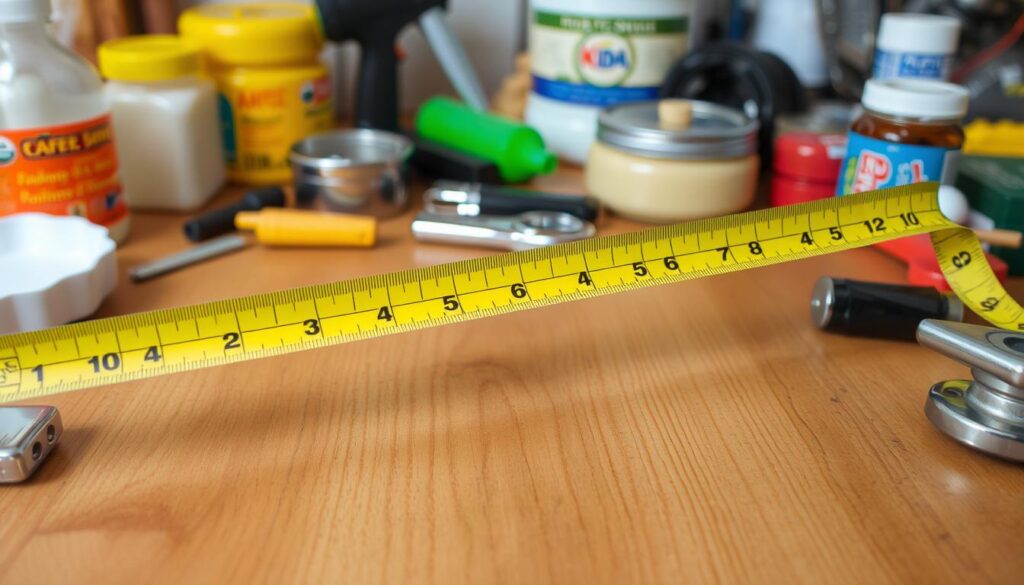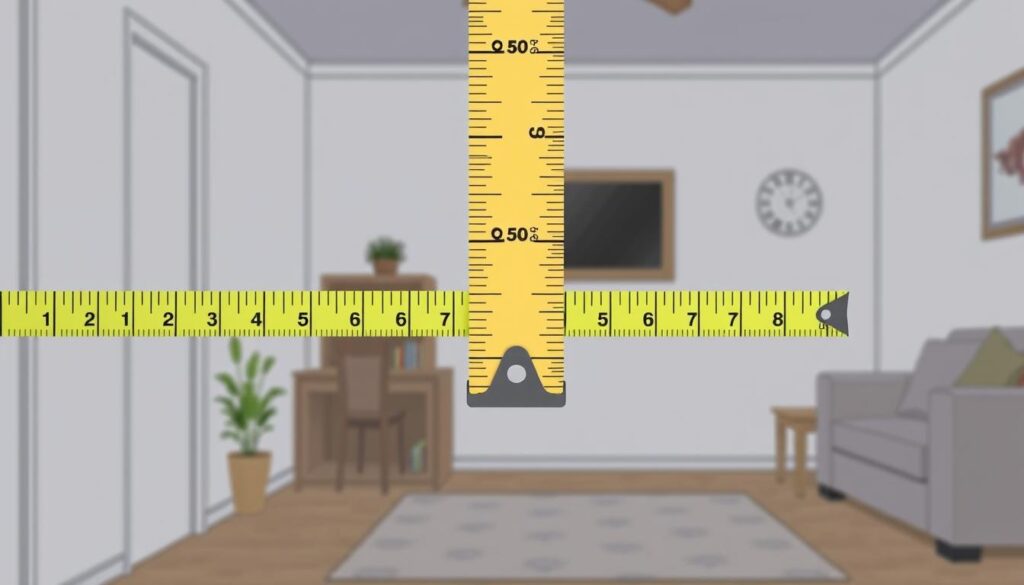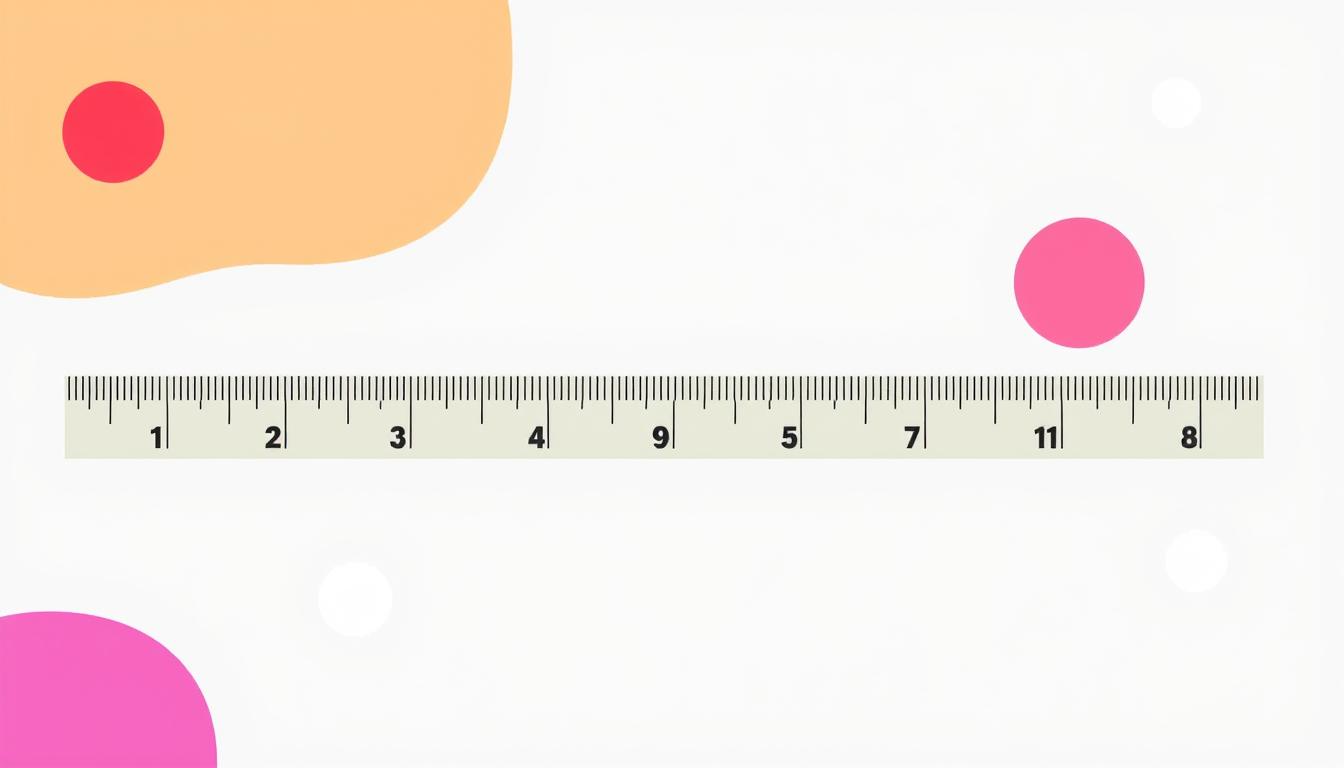Understanding the conversion of feet to inches is essential in everyday life and various professional fields. Knowing how many inches is 5 feet can be crucial for practical applications. The question of how many inches are in 5 feet is a common one, and the answer is simple: 5 feet in inches is equal to 60 inches.
Converting between feet and inches is a fundamental skill that can be applied to various aspects of life, from construction and design to sports and fitness. In this article, we will explore the importance of understanding this conversion and provide a detailed explanation of how to convert 5 feet to inches.
Key Takeaways
- 5 feet is equal to 60 inches
- Converting feet to inches is essential for practical applications
- Understanding the conversion of feet to inches is crucial in various professional fields
- Knowing how many inches is 5 feet can be useful in everyday life
- Converting between feet and inches is a fundamental skill
- 5 feet in inches is a common conversion used in various contexts
Understanding Feet and Inches
Feet and inches are fundamental units in the imperial system of measurement, commonly used in the United States and other countries. Mastering the relationship between these units is crucial for various everyday applications.
What Are Feet and Inches?
A foot is a unit of length equal to 12 inches. The inch, being smaller, allows for more precise measurements. Together, these units form the backbone of many measurement systems used in different fields.
Common Uses of Feet and Inches
- Construction: Measuring room dimensions and building materials.
- Interior Design: Sizing furniture and space planning.
- Human Height: Recording and communicating personal stature.
Knowing how to convert inches in 5 feet or 5 ft to inches is essential when working in these areas to ensure accuracy and consistency.
The Conversion Formula
Understanding how to convert 5 feet to inches is fundamental for accurate measurements. This basic formula serves as the foundation for various applications, both simple and complex.
Basic Conversion Concepts
One foot is equivalent to twelve inches. To convert 5 feet to inches, multiply the number of feet by twelve. This means 5 feet equals 60 inches. This straightforward calculation allows for quick and precise conversions.
Why Use a Conversion Formula?
Employing a reliable conversion formula is essential when you need to convert 5 feet to inches. Accuracy is critical in various tasks, from home improvement projects to professional construction work. By mastering this conversion, you ensure that your measurements are precise, which is vital for the success of any project.
Steps to Convert Feet to Inches
Converting feet to inches is a straightforward process that can be done quickly with simple math. Understanding how to convert 5 feet to inches is especially useful in various everyday situations.
Simple Math for Everyday Use
To convert feet to inches, use the basic conversion factor where 1 foot equals 12 inches. This means you multiply the number of feet by 12 to find the equivalent inches.
- Identify the number of feet you want to convert.
- Multiply that number by 12.
- The result is the number of inches.
Examples of Conversion
Let’s explore how to convert 5 feet to inches:
- Start with 5 feet.
- Multiply 5 by 12 (since 1 foot = 12 inches).
- 5 feet equals 60 inches.
Another example: To convert 3 feet to inches, multiply 3 by 12, resulting in 36 inches.

Quick Mental Calculations
For quick conversions, remember that each foot adds 12 inches. For instance, converting 2 feet to inches is as simple as adding 12 inches twice, totaling 24 inches.
| Feet | Inches |
|---|---|
| 1 ft | 12 inches |
| 2 ft | 24 inches |
| 5 ft | 60 inches |
| 10 ft | 120 inches |
Why Knowing Feet to Inches Matters
Understanding how many inches is 5 feet can significantly impact various aspects of daily life and professional work. This conversion is not just a mathematical exercise but a practical tool used regularly.
Importance in Daily Life
From measuring furniture to tailoring clothing, knowing that 5 feet equals 60 inches helps in making precise adjustments. Whether you’re hanging a picture frame or planning a room layout, these measurements ensure everything fits perfectly.
Relevance in Construction and Design
In construction and interior design, accurate measurements are crucial. Architects and builders rely on knowing how many inches is 5 feet to create detailed plans and ensure the structural integrity of their projects. This precision helps in maintaining safety standards and achieving the desired aesthetic in design projects.
Quick Reference Guide
Having a handy conversion guide and the right measuring tools can make your projects smoother. Below is a quick reference to common conversions and the tools you’ll need.
Common Conversions
Understanding inches in 5 feet is essential for various tasks. Here are some standard conversions:
- 1 foot = 12 inches
- 3 feet = 36 inches
- 5 ft to inches equals 60 inches
- 10 feet = 120 inches
Remember, converting 5 ft to inches gives you 60 inches, a handy metric for many measuring needs.
Measuring Tools and Their Uses
Selecting the right tool ensures accuracy in your measurements. Here are common tools used for measuring feet and inches:
- Tape Measures: Flexible and portable, ideal for various applications.
- Rulers: Best for smaller, precise measurements.
- Laser Distance Meters: Provide quick and accurate measurements over longer distances.
Each tool has its advantages:
| Tool | Pros | Cons |
|---|---|---|
| Tape Measure | Portable, versatile | Can be difficult to read |
| Ruler | Precise, easy to use | Limited length |
| Laser Distance Meter | Highly accurate, long range | More expensive |
Choosing the right measuring tool depends on your specific needs and the scale of your projects.
Converting Feet to Inches in Different Scenarios
Understanding how to convert 5 feet to inches is essential in various everyday situations. Accurate measurements ensure projects and activities run smoothly.
Practical Applications in Home Projects
When undertaking home improvement tasks, knowing how to convert 5 feet to inches can make a significant difference. For instance, installing flooring often requires precise measurements to calculate the total square footage. Similarly, hanging curtains at the correct height ensures they look balanced and aesthetically pleasing.
- Measuring wall space for shelves.
- Determining the length of baseboards needed.
- Planning the layout for new furniture.

Sports and Fitness Applications
In the realm of sports and fitness, the ability to convert 5 feet to inches is equally important. Coaches and athletes use these conversions to track progress and set goals. For example, measuring jump heights or setting the length of tracks relies on accurate measurements.
- Tracking vertical jump improvements.
- Setting up sprinting lanes.
- Designing workout spaces.
By mastering the conversion of 5 feet to in, individuals can enhance their performance and ensure their equipment and spaces meet the necessary specifications.
Historical Context of Measurement Units
The units of feet and inches have a rich history that spans various cultures and centuries. Understanding their origins provides insight into why these measurements remain relevant today.
Origin of the Foot and Inch
The foot as a unit of measurement dates back to ancient civilizations. The length of a foot was originally based on the average size of a human foot. Similarly, the inch was derived from the width of a thumb. These practical origins made feet and inches convenient for everyday use.
Evolution Over Time
Over the centuries, the definitions of feet and inches have been standardized to ensure consistency. For instance, today, 5 feet equals 60 inches, answering the common question, “how many inches is 5 feet?” This standardization was crucial for trade, construction, and international collaboration.
As societies advanced, the need for precise measurements led to the evolution of these units. Today, knowing that 5 feet equals 60 inches helps in various fields, from engineering to fashion design, ensuring accuracy and uniformity across different applications.
Frequently Asked Questions
Converting feet to inches often raises several questions. For example, when you need to convert 5 ft to inches or determine the inches in 5 feet, understanding the conversion process is vital. Below, we address some of the most common inquiries to help you navigate these conversions with ease.
How Many Inches in Other Feet Measurements?
Understanding how to convert various feet measurements to inches is essential for many projects. To convert 5 ft to inches, multiply the number of feet by 12, since there are 12 inches in a foot. This principle applies to any feet measurement.
- 3 ft = 36 inches
- 7 ft = 84 inches
- 10 ft = 120 inches
What if My Measurement Isn’t Whole Feet?
When dealing with fractional feet, you can still easily convert to inches. For example, to determine the inches in 5.5 feet, multiply 5.5 by 12, resulting in 66 inches. This method works for any decimal or fraction of a foot.
| Feet | Inches |
|---|---|
| 2 ft | 24 inches |
| 5 ft | 60 inches |
| 5.5 ft | 66 inches |
| 8 ft 3 in | 99 inches |
| 10.25 ft | 123 inches |
Tips for Accurate Measuring
Accurate measuring is essential when converting 5 feet in inches. Precision ensures that your projects fit perfectly and look professional. Here are some tips to help you achieve precise measurements.
Tools That Ensure Precision
Using the right tools can make a significant difference. Digital calipers and laser measures are excellent for obtaining exact measurements. Laser measures, for instance, can quickly convert 5 ft to inches without manual calculations.
Common Measuring Mistakes to Avoid
Avoid common errors like misreading the measurement marks or not accounting for unit conversions properly. Double-checking your measurements when working with 5 feet in inches can prevent costly mistakes in your projects.
Understanding Measurement Systems
Measurement systems vary across the world, each with its unique units and applications. Two primary systems are the Imperial and Metric systems, both widely used in different regions and industries.
Imperial vs Metric Systems
The Imperial system, used mainly in the United States, includes units like feet and inches. In contrast, the Metric system is prevalent globally, utilizing meters and centimeters.
- Advantages of Imperial: Familiarity in the U.S., commonly used in construction and real estate.
- Disadvantages of Imperial: Limited international use, complex conversions like how to convert 5 feet to inches.
- Advantages of Metric: Universally recognized, easier calculations with a base-10 structure.
- Disadvantages of Metric: Less common in some industries in the U.S., initial learning curve.
Understanding how to convert 5 feet to inches and 5 feet to in is essential, especially when working on projects that require precise measurements across different systems. While the Imperial system is deeply rooted in certain areas, the Metric system’s simplicity offers significant benefits for international collaboration and scientific applications.
Conclusion
Understanding how many inches is 5 feet is a fundamental skill that has practical applications in various aspects of daily life and professional fields. Mastering the ability to convert 5 ft to inches can enhance accuracy and efficiency in tasks ranging from home improvement projects to sports measurements.
Recap of Key Points
We explored the basic conversion formula, where one foot equals twelve inches, making five feet equivalent to sixty inches. This simple math is essential for precise measurements in construction, design, and personal projects. Additionally, recognizing common measuring tools and avoiding common mistakes ensures reliable results.
Encouragement to Practice Conversion
By regularly practicing how to convert 5 ft to inches, you can build confidence and proficiency in handling measurements. Whether you’re tackling DIY projects, participating in sports, or engaging in any activity that requires precise measurements, this skill proves invaluable. Embrace the practice and apply these conversions to enhance your personal and professional endeavors.













Leave a Reply